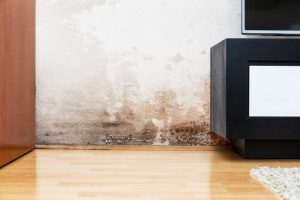 Water intrusion is one of the most nerve-racking situations for a homeowner. Once it gets inside, nearly all the areas in your home can be affected. However, water damage is often most apparent on your walls. Depending on the extent of the harm, you may need professional water damage restoration to repair the affected walls in your Scripps Ranch home.
Water intrusion is one of the most nerve-racking situations for a homeowner. Once it gets inside, nearly all the areas in your home can be affected. However, water damage is often most apparent on your walls. Depending on the extent of the harm, you may need professional water damage restoration to repair the affected walls in your Scripps Ranch home.
But if you’re not familiar with what constitutes water damage to walls, you might not call for help on time. To help prevent that, we’ll describe in detail what wall water damage looks like so that you can recognize it and react before it’s too late. Read on!
What happens when water gets in your walls?
It’s no secret that water can cause many forms of damage. For instance, water can make your wooden elements rot and may force you to get new ones.
When it comes to walls, here’s what happens when water enters them:
Wallpaper or paint starts peeling
If there’s too much moisture behind your wall, it can eventually cause the wallpaper and paint to start bubbling or peeling. This usually happens when too much water is absorbed by the sheetrock behind the wall. If the leak isn’t visible, try to locate it by looking for flaking paint or separation in the wallpaper at the seams.
Mold growth
Mold typically develops in areas that have excess moisture, such as the basement, kitchen, or bathroom. But if mold grows on baseboards or walls, especially in areas far away from plumbing fixtures, the chances are that there’s water seeping in from behind the walls.
Unlike some other forms of water damage that happen immediately, mold takes some time to develop. More specifically, it normally takes mold between 24 and 48 hours to grow in your walls if they have too much moisture.
Warping
Warping occurs if the sheetrock behind your walls absorbs too much moisture and starts bending and curving. If the warping is extreme, it can result in structural damage, which is an expensive fix. As a result, warping on the walls is a clear indicator that there’s water intrusion somewhere in the house.
How can you tell if a wall has water damage?
If there’s water damage to your walls, but it hasn’t manifested itself by peeling or warping, you can recognize it by checking for other traces. The most common signs of water damage to walls include:
Musty smell
When too much moisture or water gets absorbed into materials, such as drywall, wood, or sheetrock, it can cause a musty odor. As previously mentioned, wall cavities with water are susceptible to mold development, which comes with an overpowering, unpleasant smell. Therefore, if there’s a strong odor coming from a specific area of your walls, they may have a leak and mold growth behind them.
Visible stains
Another symptom of excess water accumulating in the sheetrock and drywall is noticeable staining. If the stains continue to grow in size, this is a reliable indicator that there’s a hidden plumbing leak.
Top-rated water damage restoration in Scripps Ranch always answers your call
 Even if water damage in your house seems negligible and insignificant, don’t try to handle it yourself. This can do more harm than good, set you back a hefty sum, and prevent you from having a sumptuous family dinner at Hotel del Coronado.
Even if water damage in your house seems negligible and insignificant, don’t try to handle it yourself. This can do more harm than good, set you back a hefty sum, and prevent you from having a sumptuous family dinner at Hotel del Coronado.
Instead, take your phone and dial KIC Restoration the moment you notice a sign of a water leak. We have unmatched expertise in water damage restoration and we’ll make sure all affected areas are back in good condition.
Give us a call and KIC will deliver superior restoration!
